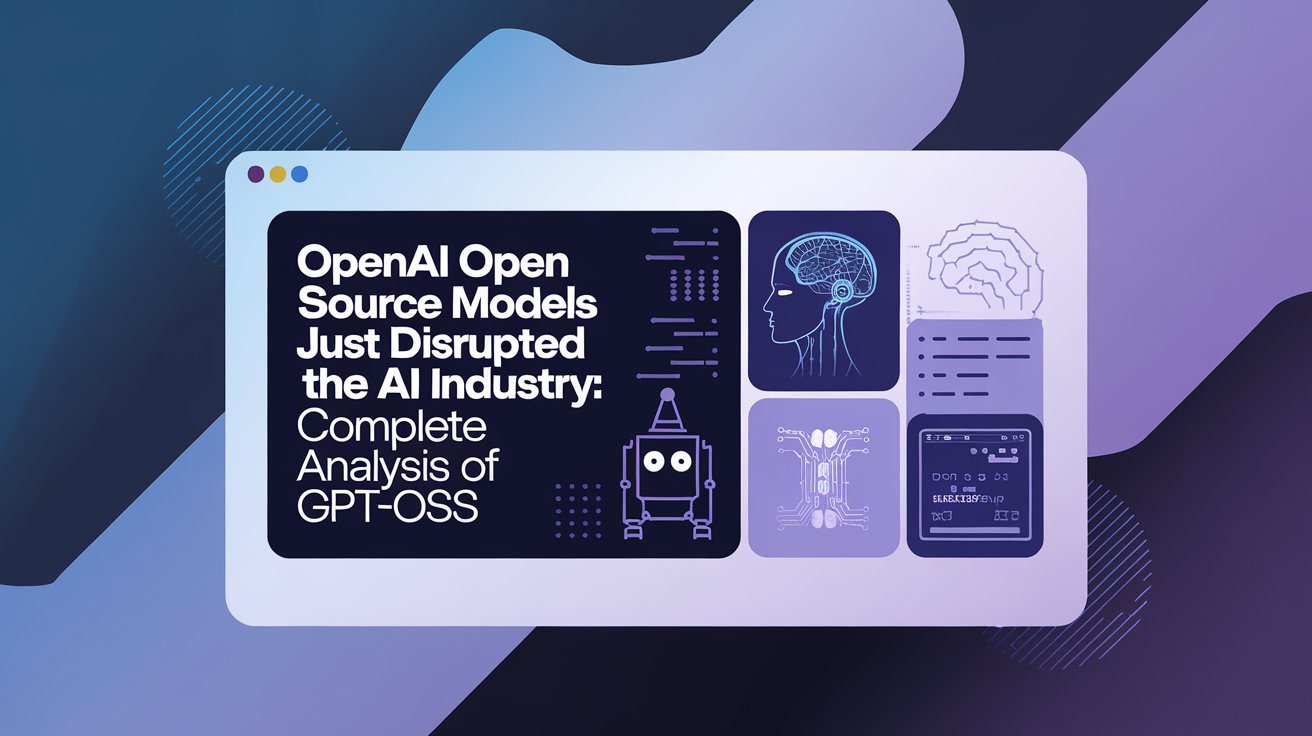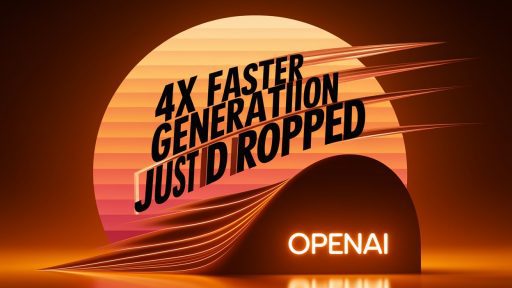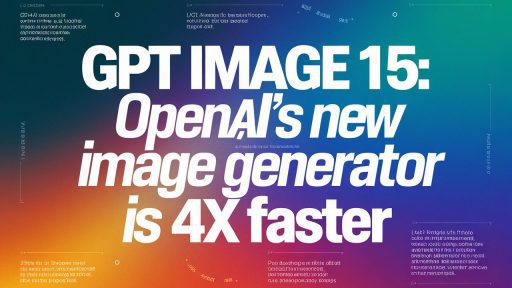In a move that’s sending shockwaves through Silicon Valley, OpenAI open source models have finally arrived – and they’re already rewriting the rules of AI development. After six years of keeping their most powerful models locked behind paywalls, OpenAI just dropped two groundbreaking open-weight models that could fundamentally change how we think about AI accessibility and competition.
What Are OpenAI’s New Open Source Models?
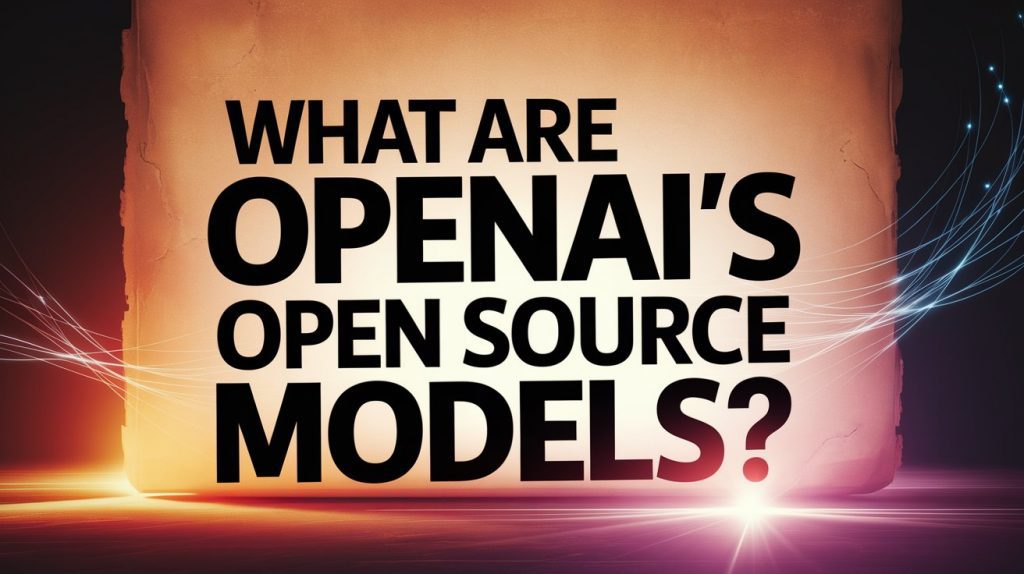
On August 5, 2025, OpenAI released two revolutionary OpenAI open source models: gpt-oss-120b and gpt-oss-20b. These aren’t just another incremental update – they’re the company’s first open-weight models since GPT-2 in 2019, marking a dramatic strategic shift that could reshape the entire AI landscape.
Key Specifications at a Glance
| Feature | gpt-oss-120b | gpt-oss-20b |
|---|---|---|
| Parameters | 120 billion | 20 billion |
| Architecture | Mixture of Experts (MoE) | Mixture of Experts (MoE) |
| Context Length | 131,072 tokens | 131,072 tokens |
| Hardware Requirements | Single NVIDIA 80GB chip | Consumer hardware (Mac laptops) |
| License | Apache 2.0 | Apache 2.0 |
| Reasoning Modes | Low, Medium, High | Low, Medium, High |
Why This Release Changes Everything
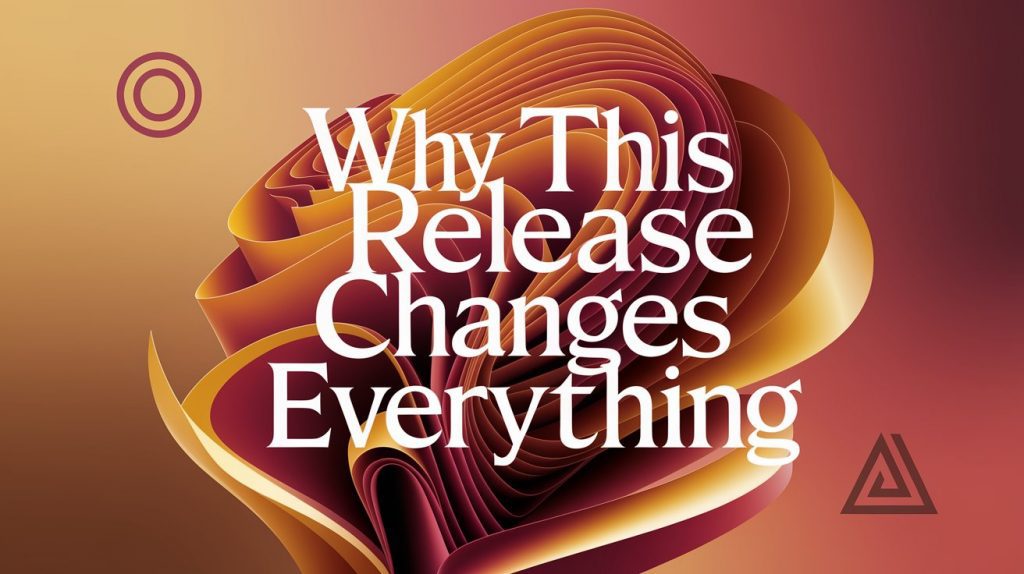
The Strategic U-Turn That Shocked Silicon Valley
Sam Altman, OpenAI’s CEO, made a remarkable admission earlier this year: OpenAI had been “on the wrong side of history” in its reluctance to open up its models. This candid acknowledgment came after watching Chinese competitors like DeepSeek demonstrate that open-source models could deliver comparable performance at a fraction of the cost.
But here’s what makes this release different from typical corporate pivots – it’s not just about playing catch-up. These models were trained using techniques informed by OpenAI’s most advanced internal models, including o3 and other frontier systems, meaning developers are getting access to genuinely cutting-edge AI capabilities.
The Numbers That Tell the Story
The performance benchmarks are eye-opening:
- Competition Math: gpt-oss-120b outperforms OpenAI’s own o4-mini on AIME 2024 & 2025 benchmarks
- Health Queries: Superior performance on HealthBench compared to o4-mini
- Coding: Matches or exceeds o4-mini on Codeforces competition coding
- Tool Use: Exceptional performance on TauBench for agentic applications
What’s remarkable is that gpt-oss-20b matches or exceeds OpenAI o3‑mini on these same evaluations, despite its smaller size.
How OpenAI Open Source Models Stack Up Against the Competition
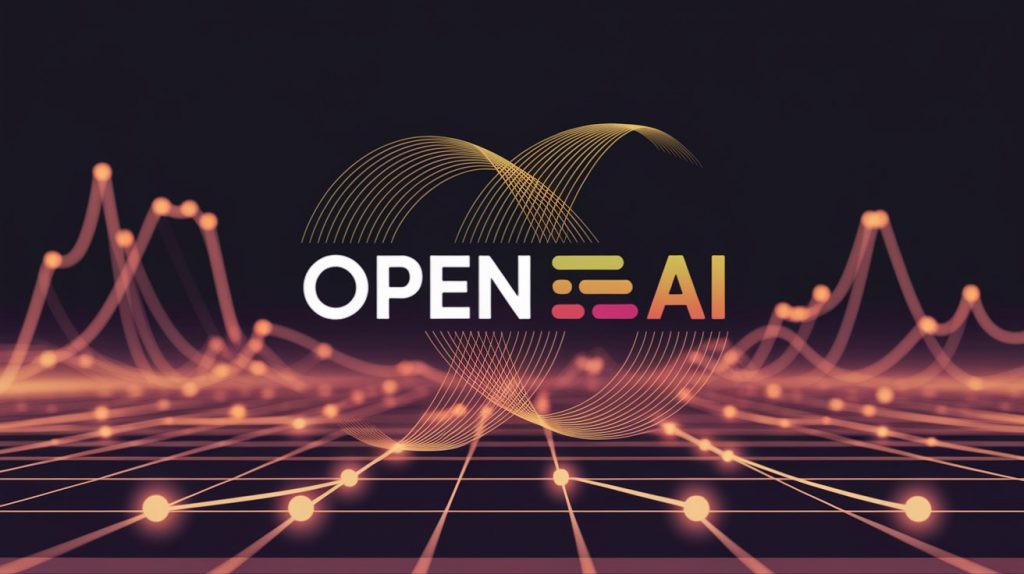
DeepSeek vs GPT-OSS: The Battle for Open-Source Supremacy
The timing of OpenAI’s release isn’t coincidental. DeepSeek’s R1 model has been gaining massive traction, with Chinese AI startups demonstrating that open-source models can rival proprietary systems. Here’s how they compare:
Architecture Differences:
- DeepSeek R1: 671B parameters with MoE architecture, activating only relevant experts
- GPT-OSS-120B: 120B parameters with OpenAI’s refined MoE implementation
- Training Efficiency: DeepSeek requires significantly fewer GPU hours for training, making it cost-effective
Performance Battleground:
- Mathematical Reasoning: DeepSeek achieves 90% accuracy in mathematics, notably higher than many competitors
- Coding Tasks: Both models excel, but GPT-OSS benefits from OpenAI’s advanced training techniques
- Real-World Applications: GPT-OSS models are optimized for practical deployment scenarios
Meta’s Llama vs OpenAI’s Strategic Response
Meta’s Llama has been downloaded 1 billion times, proving the massive demand for capable open-source models. OpenAI’s entry into this space represents a direct challenge to Meta’s dominance in the open-source AI ecosystem.
Key Differentiators:
- Reasoning Capabilities: GPT-OSS models feature advanced chain-of-thought reasoning
- Tool Integration: Native support for web search and Python code execution
- Deployment Flexibility: Adjustable reasoning effort (low, medium, high)
Technical Deep Dive: What Makes GPT-OSS Special
Mixture of Experts Architecture Explained
The models use a Mixture of Experts (MoE) architecture, which is like having a team of specialized experts where only the most relevant ones are called upon for each task. This design choice offers several advantages:
- Efficiency: Only a subset of parameters activate for each query
- Specialization: Different experts handle different domains
- Scalability: Easy to add new expert modules
- Resource Optimization: Lower computational requirements for inference
The Secret Sauce: OpenAI’s Training Methodology
The models were post-trained using a similar process as used for o4-mini, including a supervised fine-tuning stage and a high-compute RL stage. This approach combines:
- Reinforcement Learning from Human Feedback (RLHF)
- Constitutional AI principles
- Advanced safety alignment techniques
- Multi-objective optimization
Performance Optimization Features
Context Handling:
- Support for up to 131,072 context lengths, among the longest available in local inference
- Sliding Window Attention for efficient long-form processing
- Dynamic context allocation based on task complexity
Deployment Flexibility:
- Performance of up to 256 tokens per second on the NVIDIA GeForce RTX 5090 GPU
- Compatibility with popular frameworks like Ollama and llama.cpp
- Cross-platform support including Mac, Windows, and Linux
Real-World Applications and Use Cases
Developer and Enterprise Applications
Code Generation and Debugging: The models excel at complex coding tasks, from algorithm implementation to debugging enterprise applications. Early testing shows superior performance in:
- Multi-language code generation
- System architecture design
- API integration and testing
- Performance optimization suggestions
Research and Analysis: The models can reason through context problems, ideal for tasks such as web search, coding assistance, document comprehension and in-depth research.
Business Intelligence:
- Financial analysis and modeling
- Market research synthesis
- Competitive intelligence gathering
- Strategic planning support
Emerging Market Impact
The models lower barriers for use in emerging markets, potentially democratizing access to advanced AI capabilities in regions where cloud-based solutions are expensive or unreliable.
The Competitive Landscape: Who Wins and Loses
Winners in the New AI Economy
Independent Developers: Access to frontier-model capabilities without enterprise pricing Startups: Level playing field against big tech incumbents Research Institutions: Advanced models for academic research Emerging Markets: Locally deployable AI without infrastructure dependencies
Potential Disruption for Established Players
API-First AI Companies: Risk of commoditization as open models approach proprietary performance Cloud Providers: Potential shift from centralized to distributed AI inference Proprietary Model Vendors: Increased pressure to differentiate beyond base model capabilities
Safety and Limitations: What You Need to Know
OpenAI’s Safety-First Approach
The models were evaluated according to OpenAI’s Preparedness Framework, with malicious fine-tuning methodology reviewed by three independent expert groups. This comprehensive safety testing includes:
- Red team evaluation across multiple risk vectors
- Alignment testing for harmful content generation
- Robustness evaluation under adversarial conditions
- Long-term safety impact assessment
Current Limitations
Multimodal Capabilities: Unlike GPT-4o, these models are text-only Real-Time Information: No native web browsing or real-time data access Commercial Restrictions: While Apache 2.0 licensed, some enterprise use cases may require additional consideration
How to Get Started with OpenAI Open Source Models
Installation and Setup
Quick Start with Ollama:
# Install Ollama (easiest method)
curl -fsSL https://ollama.ai/install.sh | sh
# Download GPT-OSS models
ollama pull gpt-oss-120b
ollama pull gpt-oss-20b
# Start using the models
ollama run gpt-oss-20b "Explain quantum computing"
Hardware Requirements:
- gpt-oss-120b: Minimum 80GB VRAM (NVIDIA A100 or RTX 6000 Ada)
- gpt-oss-20b: 24GB VRAM (RTX 4090, RTX 5090, or high-end Mac)
Deployment Options:
- Popular tools and frameworks like Ollama, llama.cpp and Microsoft AI Foundry Local
- Hugging Face Transformers
- Custom deployment via OpenAI’s GitHub repository
Best Practices for Implementation
- Start Small: Begin with gpt-oss-20b for initial testing
- Optimize Hardware: Use quantized versions for consumer hardware
- Monitor Performance: Track token generation speed and memory usage
- Scale Gradually: Move to gpt-oss-120b for production workloads
Economic Impact and Market Implications
The $100M Training Cost Revolution
While GPT-4o’s training cost exceeded $100 million, OpenAI is essentially giving away similar capabilities for free. This represents a fundamental shift in AI economics, potentially triggering:
Cost Deflation: Pressure on AI service pricing across the industry Innovation Acceleration: Lower barriers to AI experimentation and development Market Democratization: Smaller players can compete with established AI giants
Global AI Competition Dynamics
The release directly responds to the success of Chinese models like DeepSeek, representing a strategic move to maintain Western leadership in AI development. This strategic shift reflects response to rising open-source competition, balancing open access with proprietary edge in evolving AI landscape.
Future Implications: What’s Next for Open Source AI
The Race for AI Standardization
OpenAI’s entry into open-source AI could accelerate the race to establish industry standards for:
- Model architectures and training methodologies
- Safety and alignment protocols
- Deployment and integration frameworks
- Evaluation and benchmarking standards
Predicted Industry Developments
Short-term (6-12 months):
- Rapid adoption by developer communities
- Integration into existing AI toolchains
- Performance improvements through community contributions
Medium-term (1-2 years):
- Specialized fine-tuned versions for specific industries
- Integration with enterprise software ecosystems
- Competitive responses from other major AI labs
Long-term (2+ years):
- Potential commoditization of base language model capabilities
- Shift in competition toward specialized applications and services
- Evolution toward more sophisticated multi-modal open models
Red Teaming Challenge: $500,000 Prize Pool
OpenAI is hosting a Red Teaming Challenge to encourage researchers, developers, and enthusiasts from around the world to help identify novel safety issues, with a $500,000 prize fund. This represents an unprecedented commitment to community-driven safety research.
Conclusion: The Dawn of Democratized AI
OpenAI’s release of gpt-oss models represents more than just another product launch – it’s a fundamental reimagining of how advanced AI capabilities should be distributed and accessed. By making frontier-model performance available to anyone with appropriate hardware, OpenAI has potentially accelerated AI democratization by years.
The implications extend far beyond individual developers or even companies. We’re witnessing the beginning of a new era where the most advanced AI capabilities aren’t locked behind corporate APIs but available for local deployment, customization, and innovation.
For developers, researchers, and organizations worldwide, the message is clear: the future of AI is open, and it’s available now. The question isn’t whether you should explore these OpenAI open source models – it’s how quickly you can start building with them.
Ready to get started? Download the models from OpenAI’s official repository or try them through Ollama today. The AI revolution just became accessible to everyone.
Want to stay updated on the latest developments in open-source AI? The landscape is evolving rapidly, with new models and capabilities emerging monthly. Make sure to follow the official OpenAI channels and community discussions for the latest updates on GPT-OSS development and deployment strategies.

